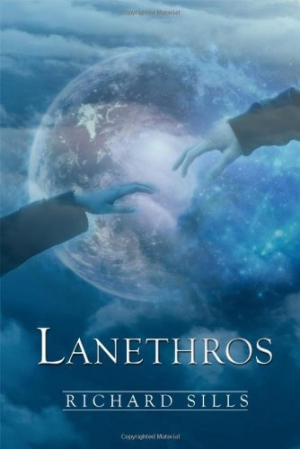
Lanethros
Sills provides a look into the future of technology dependence as he creates a universe completely different from, yet oddly similar to, our own.
Richard Sills writes an intriguing story of diverse worlds, unusual realities, and alternate states of being in his novel Lanethros. With a slight nod to Star Trek, the work is strengthened by morals, love, and idealism that provoke thought well after the story ends.
To prevent war and promote peace between the planets, Surooval, a representative of the Galactic Union who takes the form of a winged horse, travels to planets far different from his own to explore their ways, find solutions to rising conflicts, and meet with ambassadors from other worlds. During his travels, he meets another ambassador, Norma, who takes the form of a crab (called a rarb). Norma helps Surooval to understand this complicated world and a romance soon blooms between them.
One unique aspect of this story is the combination of modern life and ubiquitous technology. The characters must compute information, forcing Surooval to constantly update his knowledge capacity in order to understand new information. This element of the novel creates a sense of mystery and excitement at Surooval’s reactions to his system overload. Sills also provides a look into the future of technology dependence. The characters are able to do little without the use of the universal computer system that controls nearly everything.
The overall plot of this story is unique and compelling. Along with the different forms taken by the characters, each character had a distinct personality and interest, like playing the drums, that they love to express in their own exotic ways. Intense and eye-opening conversations ensue as the diverse characters touch on and explore various issues that the ambassadors deal with every day, such as war, crime, and diplomacy between nations, and they offer insightful, nonviolent solutions to some of the universe’s most pressing problems.
In the beginning of the story, Sills takes his time explaining the setting using beautiful imagery: “meteorites moved toward one of his suns, and they burst in flames as they sped toward him, specs of light in the vast blackness of space.” As the story progresses, however, many of these descriptions fade away into almost continuous dialogue. Although the dialogue is funny and entertaining, the lack of exposition, as well as the characters’ rhyming at random moments during the story, make following along quite difficult at times, especially when more than two people are speaking or a new character joins the conversation. With the continuous conversation and little scene description, the pacing of the story is hard to judge. As the story moves forward, time passes very slowly for the characters.
The formatting of this novel is a bit strange. Although the introduction and first three chapters are of average length, the fourth chapter stretches nearly the entire length of the novel. Having breaks between scenes and moments of exposition could have offered an opportunity for the suspense that is often missing during the story. The cover is very captivating, with an enticing E. T.-esque feel to it that could draw attention from a bookshelf.
Overall, Lanethros is the type of book that begs for a second reading to ensure complete comprehension. The reality that Sills creates is so different from ours, yet the issues discussed are quite relatable. The story continues to unfold in the second novel of this series, Antivion. Surely, it will be just as thought provoking.
Reviewed by
Jessica S. Council
Disclosure: This article is not an endorsement, but a review. The publisher of this book provided free copies of the book and paid a small fee to have their book reviewed by a professional reviewer. Foreword Reviews and Clarion Reviews make no guarantee that the publisher will receive a positive review. Foreword Magazine, Inc. is disclosing this in accordance with the Federal Trade Commission’s 16 CFR, Part 255.
